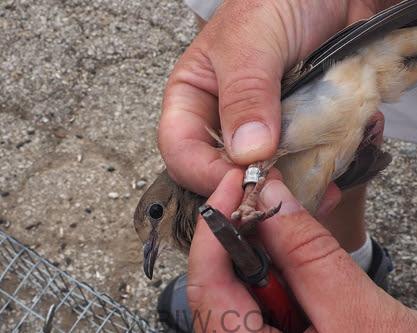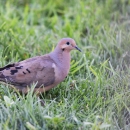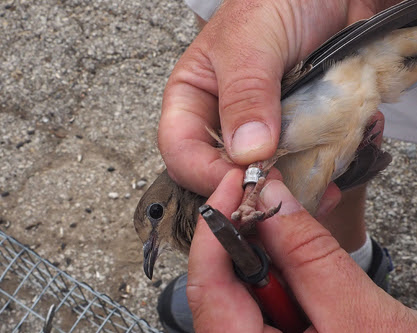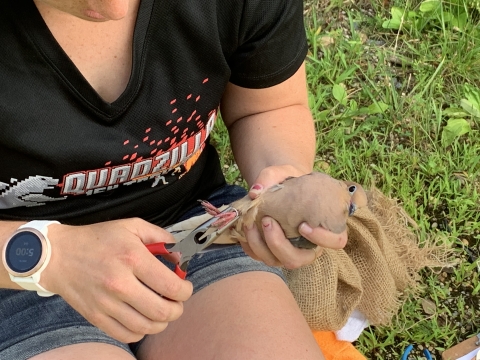
INDIANA – In July, the Department of Natural Resources will begin banding mourning doves across the state.

This important research effort helps estimate Indiana’s dove population and determine harvest limits for the hunting season.

If you recover a banded bird, be sure to report it online. If the bird has more than one band, you’ll need the band number or numbers. If some or all of the numbers have worn off, making the band unreadable, please email the bandreports@usgs.gov or find out how to send the band for chemical etching. Most bands can be chemically etched so that the numbers can be read. The process will not destroy the band, and it will be returned to you.
DNR will send you a certificate of appreciation that includes information about the bird’s sex, age, and species and where and when it was banned. You can keep the band.

Use Banding Data
Managing a complex and mobile resource requires information on breeding and wintering distribution, behavior, migratory routes, survival, and reproduction. Biologists gather this information by placing uniquely numbered bands on many species of birds. These birds may be recaptured in the future by biologists or are found dead by the general public, or in the case of waterfowl or other game birds, are harvested by hunters, who then report these bands to the U.S. Geological Survey Bird Banding Laboratory (or Canada’s Bird Banding Office), which provides information about where the bird was banded, where it was recovered, and how long it lived. This information was used to develop the Flyway system, which has been used to manage migratory birds since 1950.
The Division of Migratory Bird Management collects and analyzes banding data. Our staff coordinates with banders from various state, federal, private, and tribal agencies in ongoing, annual banding efforts. One example is the Western Canada Cooperative Waterfowl Banding Program (WCCWBP), which focuses on banding waterfowl throughout the Canadian prairies and boreal forests. Find out more about the program and read the stories of banding crews in the field.
Migratory Bird Program biologists and their counterparts in the U.S. Geological Survey have developed models that utilize banding and recovery data to predict the impacts of harvest and other take, as well as develop an understanding of environmental factors that drive migratory bird populations. Banding data were instrumental in developing Adaptive Harvest Management and are used by biologists to set annual waterfowl hunting regulations.
The value of banding data is only fully realized when banded birds are recovered and band numbers are reported to the Bird Banding Laboratory. Some recoveries are recaptures (including the resighting of bands through spotting scopes) of live birds obtained from banders or other wildlife professionals. However, the predominant number of recoveries of dead birds come from the public, either by people who have found birds that have died or by hunters who have harvested them. More information about how and where to report the recovery of banded birds can be found above under Reporting Banded Birds. Officials rely heavily upon your cooperation.



